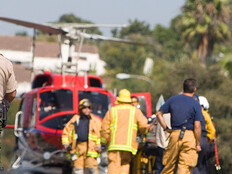Sharing Across Sites
When floodwaters rise or a major storm strikes, the public libraries in Snohomish and Island counties in Washington state swing open their doors to citizens as a place of refuge -- and IT services.
"It's key for us to have data services for the public to have contact with family and friends in different areas," says John Mulhall, IT manager for Washington's Sno-Isle Libraries. "We're always keeping that in mind."
To maintain continuity of operations, Sno-Isle Libraries recently rolled out data deduplication for its administrative center and the 21 branches in the two counties it serves. "Data deduplication makes business continuity more affordable," says Rick Villars, research vice president for storage systems at IDC.
With government services often needed 24x7, citizens have increasingly high expectations of availability. The spread of server virtualization has spurred deployment of technologies such as disk backup, data dedupe, continuous data protection and storage virtualization.
"This often gets people to reset the availability bar from the recovery mind-set of days to recovery in hours," Villars says.
.jpg)
Backup data gets copied from the main library branch to a Data Domain appliance Michael Wilson helps manage.
Photo Credit: Rick Dahms
Making Copies
Sno-Isle Libraries recently replaced its Data Domain DD410 dedupe devices with new DD510 devices that offer more capacity. One unit sits in headquarters in Marysville, Wash., and continuously duplicates data across a fiber line to an identical DD510 appliance 16 miles away in the Mukilteo branch.
"Data Domain is the key piece of our disaster recovery," says Michael Wilson, network specialist with Sno-Isle. The library district implemented disk-based data dedupe in late 2007 as part of a strategy to move away from tape. The process streamlines backups by searching for duplicate segments of data and replacing them with a pointer to a single instance of information.
All Microsoft Windows server files, Microsoft Exchange messages, finance documents, user documents and the patron reservation system statistics are backed up. Once a month, IT archives the backup data from the Data Domain devices to tape as a tiered strategy.
Sno-Isle chose the Mukilteo branch to house the second Data Domain DD510 appliance in part because of the branch's location, building size and expansive communications room, Wilson says. But a chief driver was the county's fiber plant. "We have a Gigabit fiber connection between Mukilteo and our service center," he says.
To further ensure uptime, the library plans to install a generator in Mukilteo that runs on natural gas, whereas the large generator at headquarters runs on diesel. "That gives us two different methodologies if we have a natural disaster," Mulhall says. "If it's an earthquake, natural gas could be severed."
Simplified Storage
The state of North Dakota taps IBM Tivoli Storage Manager to manage roughly 200 terabytes of data in its mixed storage environment.
Dean Glatt, director of computer systems for the state's IT Department in Bismarck, deployed the Tivoli solution to handle storage area network data and boost application availability. Without it, he says, "the physics of moving 200 terabytes of data around without a managed SAN can't be accomplished in an organized manner. Tivoli Storage Manager allows us to manage our backup and recovery time objectives as well."
Although the Tivoli storage management software remains the backbone of the Roughrider State's disaster recovery strategy, Glatt is rolling out the IBM XIV storage system for backup and disk replication to another data site about six miles away. He expects to have a plan in place by July for the migration, which will take several months to accomplish.
According to Glatt, storage managers need all the technical assistance they can get in managing enterprise data. "Too often the businesses focus on just the level of delivering data, but not the level of effort it takes to recover and restore it."
In rural Crawford County, Pa., the data center sits in a courthouse that was last updated in 1954. "In 1954 they didn't have all the electrical requirements we currently have," says Tim Kelley, director of information technology and services. "The biggest single disaster would be a fire."
The county manages to mirror data to a secondary site at the jail, which Kelley inexpensively outfitted with a mini data center using a Liebert XDF High Heat Density Enclosure.
Though the jail lacked a spare room with air conditioning, it posed the best option for a secondary IT site because it has a generator for emergency power. The Liebert cabinet has AC, temperature and humidity monitoring systems and power strips. It houses the county's secondary database servers, a mirrored storage area network, switches and an APC uninterruptible power supply. "It saved us a fortune in costs not upgrading the facility," Kelley says.
If power goes down, the server switches to the UPS and then to the generator, he says. The UPS can power the cabinet for about 15 minutes until the generator kicks on, which usually takes about three minutes. "Being able to gracefully power down is crucial," says IDC's Villars.
Continuing the Continuity Push
The thing with all disaster recovery preparations is that they are in essence never-ending, notes Villars. Building out from day-to-day storage demands makes sense given the lean budgets and IT teams of most state and local organizations.
For both those reasons, Sno-Isle Libraries has begun exploring virtualization as the next possible step in its continuity of operations efforts. "We're currently looking at where we might implement server virtualization, not only in terms of how it may serve in a disaster recovery situation but also in terms of energy savings and consolidation," says Mulhall. "While it wouldn't be practical for our organization to have a copy of every application in the data center, certain applications are mission-critical."
And the preparations continue.
To The Rescue
The Houston Public Library used technology to empower Hurricane Ike disaster victims with critical information, resources and support for recovery.
After the storm, residents lacked power, phone and internet service. The Houston Public Library transformed its neighborhood branches and Wireless Empowered Community Access Network (WeCAN) centers into disaster recovery support sites. Using donated wireless cards and mobile phones from Verizon Wireless, the organization also took its HPL Mobile Express computer lab on wheels to neighborhoods where low-income residents and senior citizens were most in need of computer assistance.
Roosevelt Weeks, deputy director of library administration, says citizens used 13 desktop PCs and 10 notebooks to register for disaster-related services such as flood, housing and unemployment assistance, and also to stay current on the locations of emergency points of distribution. In all, the initiative aided about 10,000 residents in obtaining critical human and social services in the 45 days following the storm. This use of IT to aid recovery earned the library an award from the Public Technology Institute.








